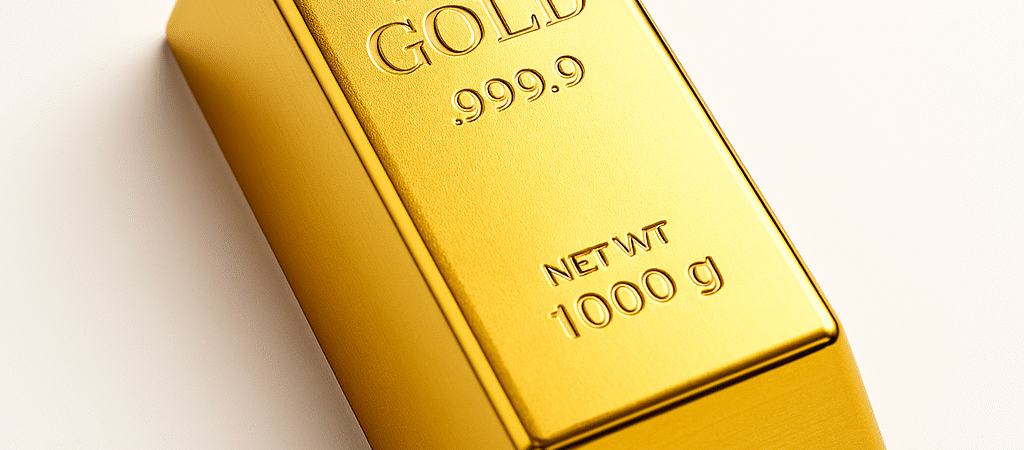Gold Surpasses $4,000 per Ounce: A New Historical High and a Renewed Debate on Its Role in the Global Financial System
Gold has exceeded the $4,000 per ounce threshold, marking a new all-time high and reigniting discussions about its role within the global financial architecture. Driving this surge are structural forces—from central bank accumulation and progressive de-dollarization to capital outflows from the cryptocurrency market.
This is not merely a speculative rally, but the beginning of a new cycle of capital reallocation toward real assets, in response to a backdrop of monetary and geopolitical uncertainty.
Lessons from History
Since 1971, when President Richard Nixon ended the Bretton Woods system and the direct link between the dollar and gold, the yellow metal has undergone a series of distinct cycles, alternating between speculative expansions and periods of consolidation.
In 1976, an ounce of gold was worth $175. Today, in 2025, the price has surpassed $4,050—an increase of over 2,200% in half a century. Over the past 20 years, gold has delivered an average annual return of +10.7%, outperforming global equities (+6%) and significantly outpacing bonds (+2%).
The long-term correlation between gold and equity markets is nearly zero, making gold a strategic diversification asset.
A New Phase: Structural Movement
The current rally, which began in 2022, is not driven by speculative factors but by systemic dynamics.
During the era of negative interest rates and Quantitative Easing, central banks accumulated dollar-denominated assets (primarily Treasuries and corporate bonds), gradually deteriorating the quality of their balance sheets. With the shift in the monetary paradigm—end of QE, rising interest rates, and geopolitical tensions—monetary authorities are rebuilding the implicit “gold anchor” of their reserves, reallocating value from fiat debt to tangible metal holdings.
Simultaneously, a geopolitical dynamic has emerged: declining trust in the dollar as the cornerstone of the global monetary order. The expansion of the BRICS bloc and discussions around regional currencies as alternatives to the greenback (including trade settlement projects in yuan, ruble, and rupee) have fueled structural demand for gold as a neutral, counterparty-free asset.
Historical Parallels: The 1970s as a Compass
The current phase bears similarities to the 1970s. Back then, following the collapse of Bretton Woods, gold rose from $35 to $850 per ounce (+2,300%) over a decade marked by inflation, geopolitical tensions, and a loss of credibility in the Federal Reserve.
Today’s macro conditions echo that period:
• Persistent inflation above target: 3.4% in the U.S., 2.9% in the Eurozone
• Negative or easing real interest rates amid expected Fed cuts: 93% probability of a cut in October and 82% in December, according to CME FedWatch
• Political pressure on the Fed: attacks from Donald Trump on the current board and institutional tensions raise concerns about central bank independence
• Elevated geopolitical risks: from Ukraine to the Middle East, the French political crisis, and instability in Japan’s government
All these factors support a reallocation toward gold and real assets.
From Cryptocurrencies to Physical Gold: The Return of Tangible Value
A new element in the current phase is the capital outflow from the cryptocurrency market.
A key development involves Tether, issuer of the world’s leading stablecoin, which increased its gold reserves from $6.7 billion to $8.7 billion in Q2 2025, according to the Financial Times. Reports of partial Bitcoin divestment to fund these purchases have fueled the narrative of digital capital flowing into physical gold.
What Do the Experts Say?
Ray Dalio, founder of Bridgewater Associates, stated that gold is now “safer than the dollar” and recommended allocating 15% of portfolios to the precious metal.
Charu Chanana of Saxo Capital Markets noted, “The breach of $4,000 is not just about fear, but a structural reallocation toward real assets in a context of declining rates and overvalued equities.”
David Chao of Invesco AM also advocates a tactical overweight in gold of around 5–10%, highlighting that gold’s share in global portfolios remains historically low compared to the 2000s.
Projections: Toward $4,900 per Ounce?
According to Goldman Sachs, gold could reach $4,900 per ounce by December 2026, in a scenario of falling interest rates and sustained institutional demand.
The bank’s base case includes:
• Fed Funds rate at 3.75% by end-2026
• Core inflation at 2.6%
• Continued net central bank purchases of 800–1,000 tonnes per year
Additional supporting factors:
• Structural weakness of the dollar (DXY below 98)
• Rising Asian demand for physical gold
• Expansion of gold-backed asset programs
In an environment of monetary and geopolitical uncertainty, physical gold remains the most resilient store of real value.
